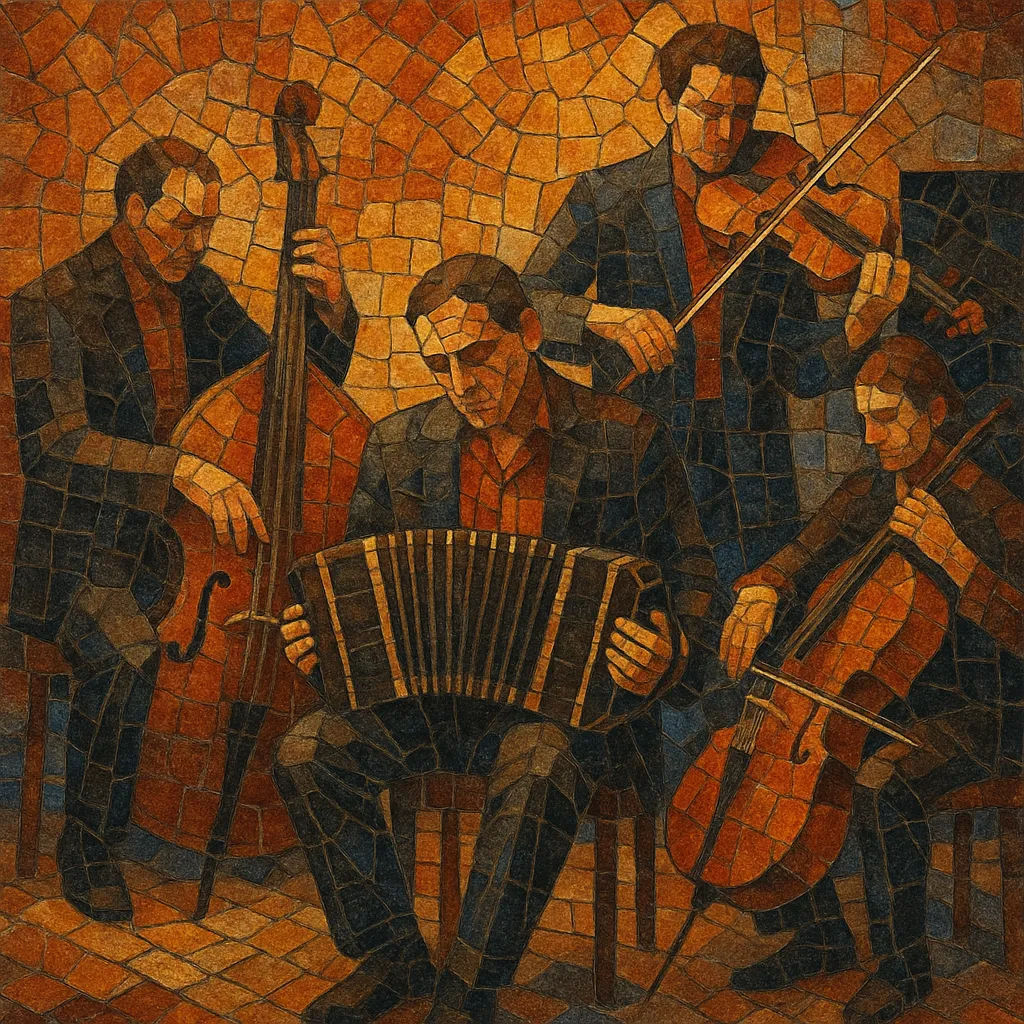Nuevo tango is a modernized, concert-oriented evolution of Argentine tango that integrates classical compositional techniques and jazz harmony with the traditional tango vocabulary.
It keeps tango’s characteristic rhythmic drive and dramatic phrasing while introducing counterpoint, extended harmonies (9ths, 11ths, 13ths), intricate arrangements, and chamber-like textures. Typical ensembles center the bandoneón alongside violin, piano, double bass, and often electric guitar or cello, treating tango as serious listening music rather than solely a social dance.
The style is closely associated with Astor Piazzolla, whose work transformed tango through sophisticated writing, virtuosic performance practice, and a distinctive blend of melancholy, tension, and urban lyricism.
Nuevo tango emerged in Buenos Aires in the mid-1950s, led by bandoneón virtuoso and composer Astor Piazzolla. After classical studies in Paris with Nadia Boulanger (1954), Piazzolla embraced his tango roots while applying classical counterpoint, form, and orchestration, as well as jazz-influenced harmony and rhythm. His Octeto Buenos Aires (1955) and later ensembles crystallized the new aesthetic.
Throughout the 1960s and 1970s, Piazzolla’s Quinteto Nuevo Tango and collaborators such as violinist Fernando Suárez Paz and cellist-arranger José Bragato refined the idiom: tightly scored parts, intricate interplay, and expressive techniques (arrastre, cuts/cortes, sharp accents) became hallmarks. While traditionalists initially resisted, the music gained traction in concert halls, redefining tango as contemporary art music.
Landmark recordings (e.g., Tango: Zero Hour, 1986) spread the style internationally. Classical and jazz artists began performing and arranging nuevo tango, and ensembles worldwide adopted its language. Post-Piazzolla, figures like Pablo Ziegler continued expanding the repertoire, while orchestras and chamber groups commissioned tango-infused works.
Nuevo tango’s blend of tango rhythm with classical craft and jazz harmony influenced electrotango/neo-tango scenes, classical crossover projects, and world-fusion ensembles. Its concert focus and idiomatic techniques now inform conservatory training, film music, and modern chamber writing, ensuring the style’s continued evolution beyond the dance floor.


